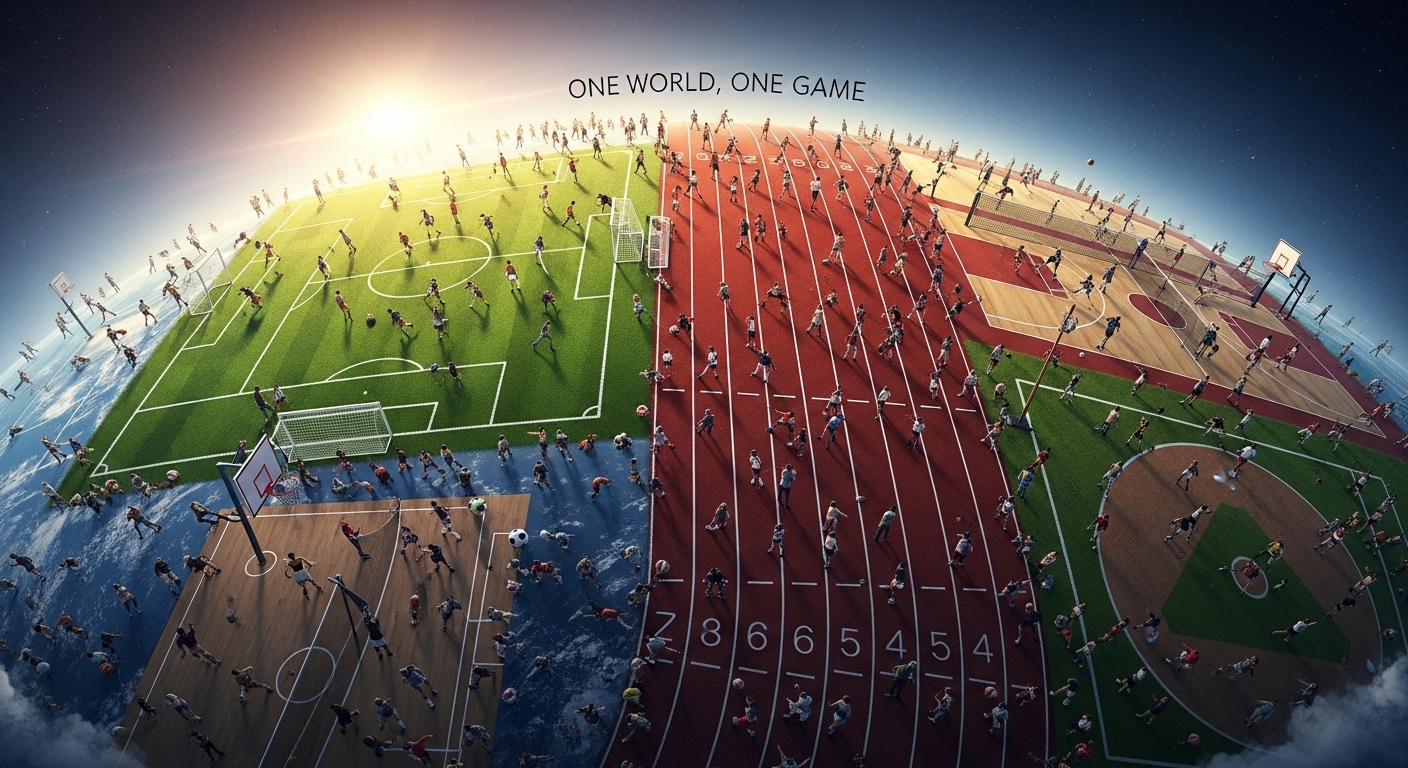Sports have been an integral part of human society for centuries, shaping cultures, fostering community, and inspiring personal growth. From ancient Olympic games in Greece to modern-day international tournaments, sports reflect not just physical prowess but also human ambition, strategy, and resilience. This article delves into the multifaceted world of sports, exploring its history, benefits, types, impact on society, and future trends.
The History of Sports
The roots of sports trace back to prehistoric times when humans engaged in activities such as hunting, running, and wrestling to survive. These early activities gradually evolved into organized competitions. Ancient civilizations recognized the importance of physical activity, leading to formalized events.
In ancient Greece, sports held both physical and spiritual significance. The Olympic Games, first held in 776 BC, celebrated athletic excellence and honored the gods. Competitions like running, discus, javelin, and wrestling tested strength, speed, and skill. Similarly, ancient Egypt, China, and Rome developed their own sporting traditions, emphasizing military preparedness and communal celebration.
Over centuries, sports evolved with social, cultural, and technological advancements. The industrial revolution made leisure time more common, fostering organized sports and competitive leagues. The 19th and 20th centuries saw the creation of modern sports such as football, cricket, basketball, and tennis. Today, sports have become a global phenomenon, transcending cultural and national boundaries.
The Importance of Sports
Sports play a crucial role in personal and societal development. Their importance extends beyond mere recreation, touching physical, mental, and social dimensions of human life.
Physical Benefits
Engaging in sports improves physical health in numerous ways. Regular athletic activity strengthens the cardiovascular system, enhances muscular development, and improves flexibility and coordination. Sports help maintain healthy body weight, prevent chronic diseases, and boost overall vitality. Activities like swimming, running, and cycling are excellent for cardiovascular endurance, while sports like gymnastics and martial arts enhance strength and agility.
Mental Benefits
Sports are not only about physical prowess; they also strengthen the mind. Participation in sports reduces stress, anxiety, and depression by releasing endorphins—natural mood enhancers. Sports encourage focus, discipline, and resilience. Team sports, in particular, teach collaboration, strategic thinking, and problem-solving, all of which contribute to mental growth.
Social Benefits
Sports foster social interaction and community building. They unite people across age groups, cultures, and backgrounds. Through sports, individuals develop communication skills, empathy, and a sense of belonging. Sporting events bring communities together, promoting shared experiences and collective pride.
Types of Sports
Sports can be categorized in numerous ways, including by the type of physical activity, number of participants, or level of competitiveness. Understanding these classifications helps appreciate the diversity and richness of athletic pursuits.
Team Sports
Team sports involve groups of players working together to achieve a common goal. These sports emphasize cooperation, coordination, and strategy. Popular team sports include football, basketball, volleyball, cricket, and hockey. Success in team sports depends not only on individual skill but also on the ability to collaborate effectively.
Individual Sports
Individual sports focus on personal performance and self-improvement. Athletes rely on their abilities to compete against others or against their own previous achievements. Examples include tennis, boxing, swimming, athletics, and gymnastics. These sports cultivate discipline, mental toughness, and personal accountability.
Adventure and Extreme Sports
Adventure and extreme sports are designed to push physical and mental limits. Activities like rock climbing, paragliding, skydiving, and snowboarding combine skill, courage, and risk-taking. These sports attract thrill-seekers and foster resilience, quick decision-making, and adaptability.
Indoor and Outdoor Sports
Sports are also classified based on location. Indoor sports like badminton, table tennis, and squash can be played irrespective of weather, making them suitable for urban environments. Outdoor sports, including football, cricket, golf, and athletics, leverage natural spaces and require adaptability to changing conditions.
Recreational vs. Competitive Sports
While some sports are played casually for enjoyment and fitness, others are highly competitive, involving rigorous training and structured tournaments. Recreational sports, such as jogging, swimming, or casual basketball, focus on health and enjoyment. Competitive sports, on the other hand, include professional leagues, championships, and international tournaments where athletes strive for excellence and recognition.
Sports and Youth Development
Sports play a vital role in shaping young minds. Participation in sports from an early age instills valuable life skills, promotes physical fitness, and encourages healthy habits. Children involved in sports learn goal-setting, teamwork, time management, and perseverance. Moreover, sports can provide a sense of achievement and self-confidence, helping youth overcome challenges both on and off the field.
Schools and community programs often use sports as a tool to engage children, fostering a positive environment that promotes social inclusion, cultural understanding, and personal development. For many young athletes, sports also open doors to scholarships, higher education, and professional careers.
Women in Sports
Historically, sports were predominantly male-dominated, but the role of women in sports has grown significantly over the past century. Female athletes now compete at elite levels in virtually every sport, breaking stereotypes and inspiring generations. Events like the FIFA Women’s World Cup, Women’s Olympic Games, and professional leagues in basketball, cricket, and tennis showcase women’s athleticism and determination.
Promoting women’s participation in sports has broader societal benefits. It encourages gender equality, empowers women, and challenges traditional norms. Support for female athletes through funding, infrastructure, and media coverage is essential to continue this positive trend.
The Role of Technology in Sports
Technology has revolutionized sports, enhancing performance, safety, and fan engagement. Advanced training equipment, wearable devices, and performance analytics help athletes optimize their routines and monitor progress. Video replay systems and goal-line technology ensure fair play and accurate decision-making in competitive sports.
Sports broadcasting has also transformed the spectator experience. High-definition coverage, virtual reality, and interactive platforms allow fans worldwide to engage with their favorite teams and athletes in real time. Social media further amplifies the reach of sports, connecting athletes with fans and creating global communities.
Sports and Society
Sports influence society in multiple ways. They are a source of entertainment, national pride, and cultural identity. Major sporting events like the Olympic Games or the FIFA World Cup bring nations together, fostering unity and shared excitement. Sports can also act as a platform for social change, raising awareness about important issues such as health, equality, and environmental sustainability.
Moreover, sports have economic implications. Professional leagues, merchandising, tourism, and sponsorships generate substantial revenue, creating jobs and stimulating local economies. Cities hosting international events benefit from infrastructure development and global recognition.
Challenges in Sports
Despite its benefits, the world of sports faces several challenges. Doping, corruption, and match-fixing threaten the integrity of competition. Unequal access to sports facilities and funding limits participation, especially in underprivileged communities. Injuries, overtraining, and mental stress can impact athletes’ well-being, requiring comprehensive support systems.
Addressing these challenges involves strict regulations, ethical standards, and investment in grassroots programs. Encouraging inclusivity, promoting mental health, and emphasizing fair play are essential for sustaining the positive impact of sports.
The Future of Sports
The future of sports promises innovation, inclusivity, and global growth. Emerging trends include esports, virtual competitions, and hybrid sports that blend physical and digital experiences. Advances in sports science will continue to enhance performance, injury prevention, and recovery.
Greater emphasis on sustainability and social responsibility will shape how sports are organized and consumed. Eco-friendly stadiums, ethical sponsorships, and community-driven programs will define the next era of sports. Moreover, continued advocacy for gender equality, accessibility, and mental well-being will ensure that sports remain a force for positive change.
Conclusion
Sports are more than just games; they are a reflection of human creativity, determination, and collaboration. They build character, strengthen communities, and inspire generations. From ancient traditions to modern innovations, sports continue to evolve, uniting people across the globe in shared passion and excitement.
Engaging in sports offers lifelong benefits, from physical fitness to mental resilience and social connection. Whether as a participant, spectator, or supporter, embracing sports enriches life in countless ways. By promoting inclusivity, fairness, and innovation, we can ensure that the world of sports remains vibrant, dynamic, and inspiring for generations to come.



